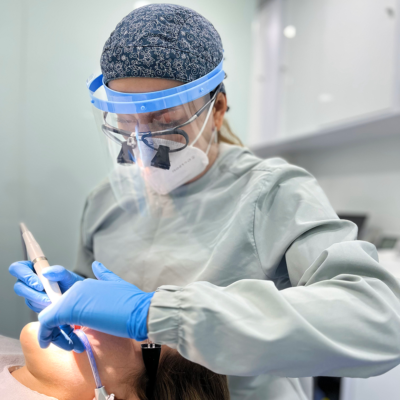The Aesthetic Dentistry It is a specialty whose purpose is to achieve a harmonious appearance with the appearance and functionality of the teeth. Its origins date back to 300 BC. In Egypt, where doctors made inlaid with precious stones in their teeth for aesthetic reasons, since they considered them a symbol of status and beauty. The most used stones were lapis lazuli, turquoise or amethyst.
In addition to gemstones, materials such as toothpaste based on pumice stone and vinegar were used in Egyptian culture to reduce stains on the teeth. In 700 BC, the Etruscans, a civilization that inhabited the Italian peninsula between the 8th and 3rd centuries BC, were the first to use materials for implants, such as ivory and seashells. Records of the construction of dentures from human or animal teeth in this population have also been found.
Throughout history, elements of the environment have been used to beautify and improve the quality of the teeth, but it was only until 1728 that this knowledge translated into the term “Restorative Dentistry” From the hand of Pierre Fauchard, considered the Father of modern dentistry due to their contributions to this discipline.
One of the most relevant was the writing of the book ‘The Surgeon Dentist’, in which he described operating methods to extract and repair teeth with caries.
In 1980 a finding was produced that had a significant impact on the world of dental aesthetics and is still valid: porcelain veneers. These thin ceramic sheets adhere to the front of the teeth and serve to correct imperfections such as discoloration, fractures and misalignments.

Another significant advance for this scientific discipline was the introduction of the dental implants, which provide a durable and natural solution to replace missing teeth, restoring function and dental aesthetics. This procedure has a history between 800 and 2500 BC, with the Etruscans and Phoenicians, who used bands and gold wires for the construction of dental prostheses

Today, technology has played a crucial role in the development of aesthetic dentistry. the use of 3D digital scanners and computer-aided design software (CAD/CAM) has allowed dentists to create custom restores with exceptional precision. These technological advances have reduced treatment times and have improved the quality of results.
In addition, there are Computer-assisted manufacturing software, which are used to carry out dental repairs according to the physiognomy of the patient, and can be sculpted in different materials such as ceramics, resin or metal.
In addition, X-rays have undergone a process of evolution and, at present, the digital radiographs They are the most used due to their high resolution, as well as their convenient storage and easy access to images.
To achieve comprehensive results, modern aesthetic dentists work in collaboration with specialists in orthodontics, periodontics and implantology. This is because the treatments must be adapted to the individual needs and desires of each patient, providing personalized and satisfactory results. Otherwise, patients could undergo procedures in which their smile is not aligned with their features and thus fall into an artificial aesthetic.
At Cliniq you will find a wide portfolio of dental procedures, with certified professionals who understand dentistry in a comprehensive way and seek to achieve the best result for each of our patients.
All our processes are made with state-of-the-art technology, under international standards certified processes.
Come to CLINIQ And show the world your smile!
